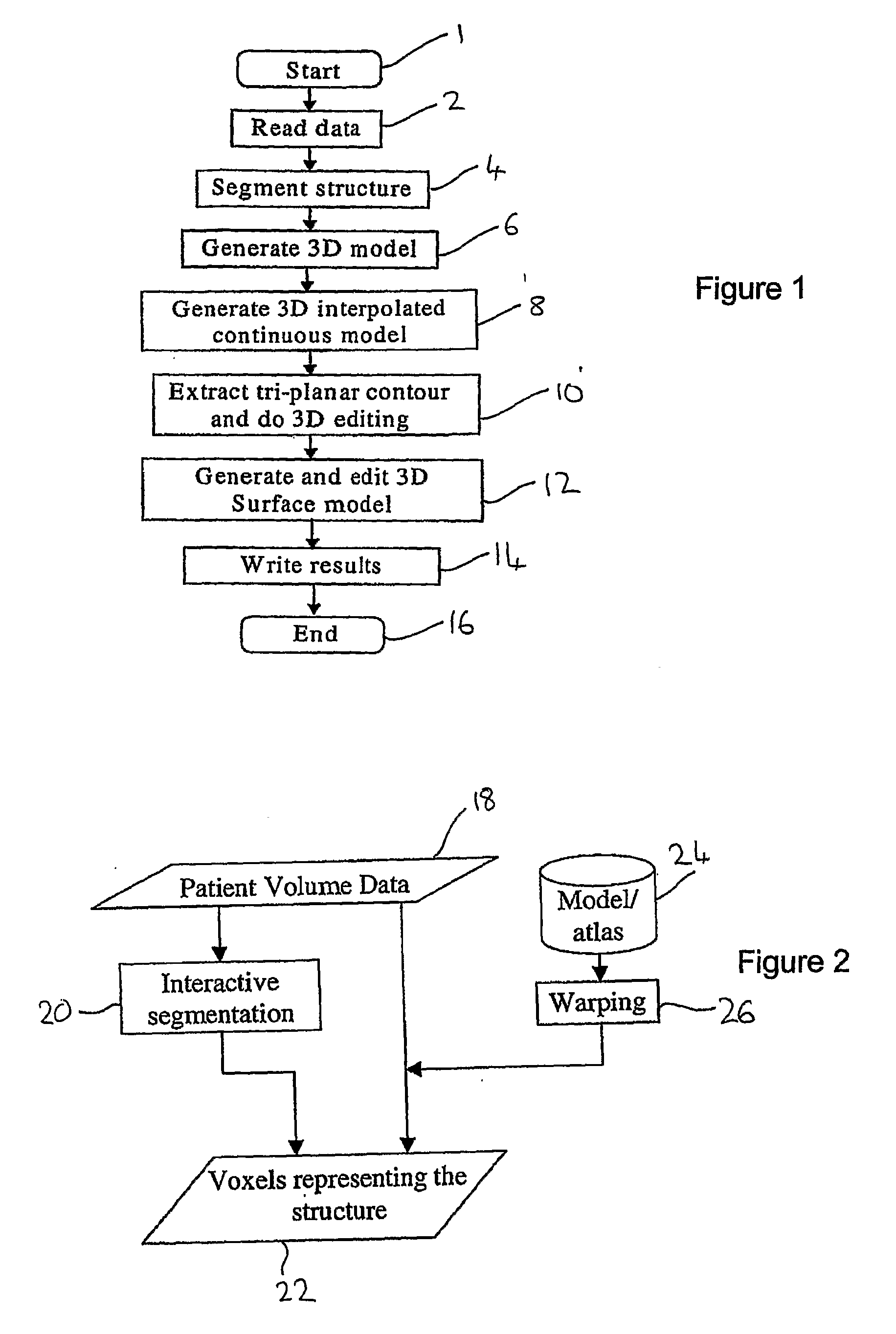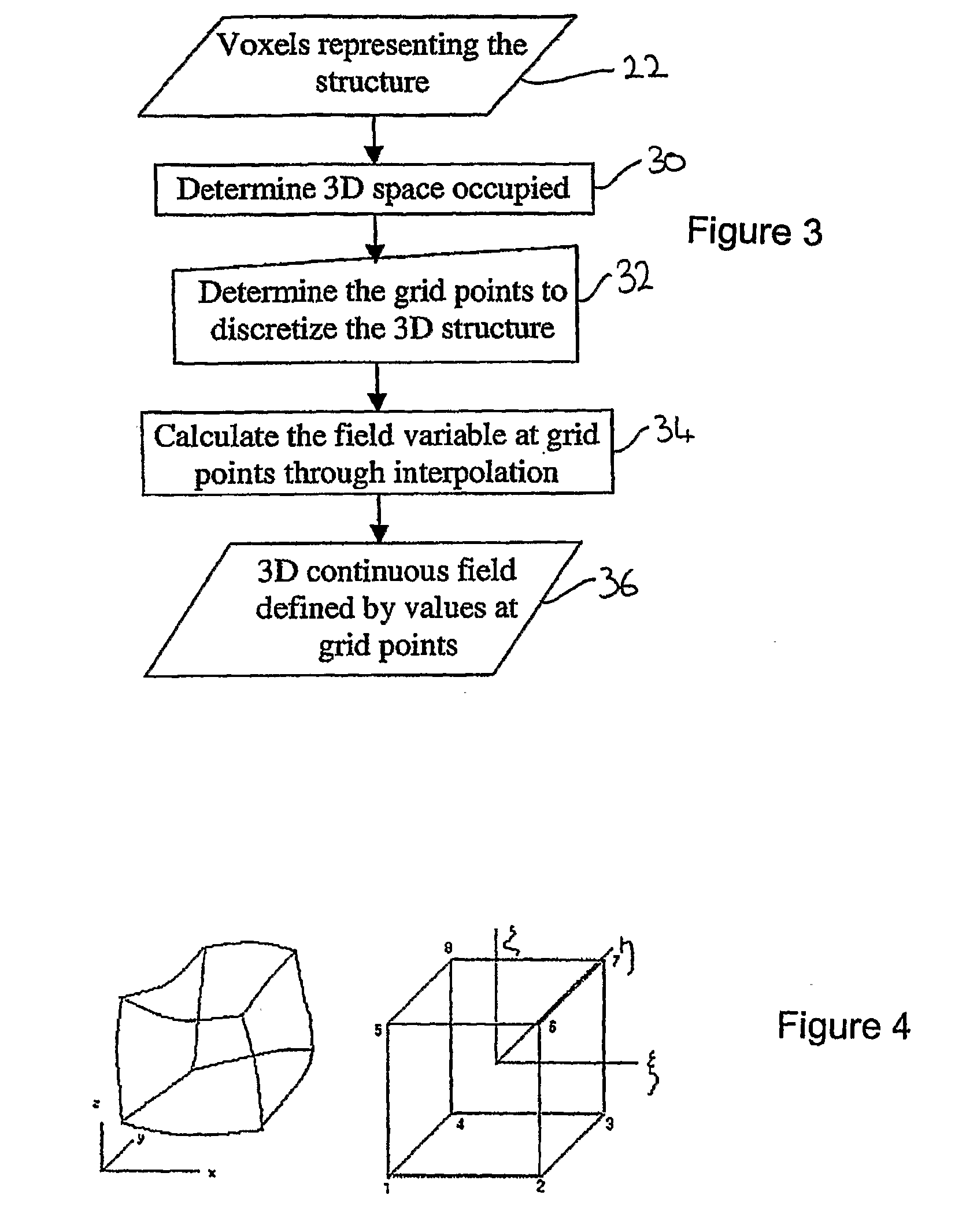Method and Apparatus for Editing Three-Dimensional Images
a three-dimensional image and apparatus technology, applied in image data processing, instruments, computing, etc., can solve the problems of incongruity between 2d processing and 3d processing, tedious processing of images one slice at a time, and inability to use 2d processing for 3d processing, etc., to achieve easy and efficient 3d editing of volumetric data, extend the result, and easily and efficiently manipulate the shape surface model
- Summary
- Abstract
- Description
- Claims
- Application Information
AI Technical Summary
Benefits of technology
Problems solved by technology
Method used
Image
Examples
Embodiment Construction
[0073]A flow diagram of the overall process according to an embodiment of the invention is shown in FIG. 1. The first stage 1 initiates the process and in stage 2 the data to be processed is read into the system. The data is then segmented in a further stage 4 to obtain a preliminary set of voxels. Taking these voxels as control points, the continuous approximation of a function, for example, the grey level, is generated as a 3D model in a fourth stage 6 and this is then interpolated in a fifth stage 8 to produce a 3D interpolated continuous model.
[0074]From the distribution of the interpolated smooth function, the tri-planar contours which are the contours of the interested shape on the orthogonal cross section planes (typically, the axial, coronal and sagittal planes), may be extracted in a sixth stage 10 and a surface model of the interested structure may be generated in a seventh stage 12. In this stage 12, the modification of the interested shape structure is performed by chang...
PUM
 Login to View More
Login to View More Abstract
Description
Claims
Application Information
 Login to View More
Login to View More - R&D
- Intellectual Property
- Life Sciences
- Materials
- Tech Scout
- Unparalleled Data Quality
- Higher Quality Content
- 60% Fewer Hallucinations
Browse by: Latest US Patents, China's latest patents, Technical Efficacy Thesaurus, Application Domain, Technology Topic, Popular Technical Reports.
© 2025 PatSnap. All rights reserved.Legal|Privacy policy|Modern Slavery Act Transparency Statement|Sitemap|About US| Contact US: help@patsnap.com



